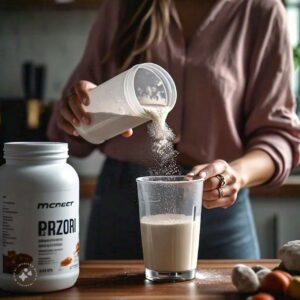Definition
Usually called fats, lipids are a broad class of chemical compounds that are soluble in nonpolar solvents like ether and chloroform but insoluble in water. Because of their lengthy hydrocarbon chains, they are differentiated by their hydrophobic nature. In this article we explore will explore Lipid peroxidation, Sources and Functions.
II. Examples
These Examples include triglycerides, phospholipids, steroids, and waxes. Triglycerides, found in oils and fats, help as a primary storage form of energy in organisms. Phospholipids, abundant in cell membranes, contribute to their structural integrity. Steroids, such as cholesterol, and hormones like estrogen and testosterone, play key roles in cellular function and signaling. Waxes provide waterproofing and protection for plants and animals.
III. Types
It can be broadly classified into several categories:
- Triglycerides: Comprising glycerol and three fatty acid chains, triglycerides serve as the primary form of energy storage in adipose tissue.
- Phospholipids: These molecules consist of a glycerol backbone, two fatty acid chains, a phosphate group, and a polar head group. Phospho type form bilayer of cell membranes.
- Steroids: Steroids have a characteristic four-ring structure. Cholesterol, a type of steroid, is a crucial component of cell membranes and serves as a precursor for the synthesis of steroid hormones.
- Waxes: Esters of long-chain fatty acids and long-chain alcohols make up waxes.. They provide waterproofing and protection in organisms.
IV. Lipid Panel
This panel, also known as a lipid profile, is a blood test that measures various lipid levels in the bloodstream. It naturally includes measurements of total cholesterol, low-density lipoprotein (LDL) cholesterol, high-density lipoprotein (HDL) cholesterol, and triglycerides. This panel provides valuable information about an individual’s risk of cardiovascular disease.
V. Lipid Panel Test
A panel test is conducted after an overnight fast to obtain accurate lipid measurements. Fasting ensures that recent dietary intake does not influence its levels, allowing for a more reliable assessment of cardiovascular risk factors.
VI. Lipid Monomer
The monomers of it vary depending on the type. For triglycerides, the monomers are glycerol and fatty acids. In phospholipids, the monomers include glycerol, fatty acids, phosphate, and a polar head group. Steroids, on the other hand, are composed of cholesterol as their monomeric unit.
VII. Lipid Bilayer
The lipid bilayer is an important structural component of cell membranes. It contains of two layers of phospholipid molecules arranged tail-to-tail, with their hydrophobic tails facing inward and their hydrophilic heads facing outward. This arrangement provides a barrier that separates the internal contents of the cell from the external environment.
VIII. Lipid Profile
That profile provides a comprehensive assessment of an individual’s lipid levels, including cholesterol and triglycerides. Abnormal profiles, characterized by elevated LDL cholesterol or triglycerides and low HDL cholesterol, are connected with an increased risk of cardiovascular disease.
IX. Lipid Structure
The structure of it varies depending on the type. Three fatty acid chains are joined to a glycerol backbone to form triglycerides. Phospholipids have a similar structure but include a phosphate group and a polar head group. Steroids are characterized by a four-ring structure, while waxes are composed of long-chain fatty acids and alcohols.
X. Lipid Function
Lipid peroxidation help in many functions within living organisms:
- Energy Storage: Triglycerides store energy in adipose tissue, serving as a reserve fuel source.
- Cellular Structure: Phospholipids form the bilayer of cell membranes, providing structural integrity and regulating cellular absorptivity.
- Signaling: Steroid hormones, derived from cholesterol, play crucial roles in cellular signaling and regulation.
- Insulation and Protection: Waxes provide waterproofing and protection in plants and animals, preventing excessive water loss and shielding against environmental threats.
XI. Lipid Rafts
Specialized microdomains in the cell membrane called lipid rafts are abundant in sphingolipids and cholesterol. These areas are necessary for multiple biological functions, like cell adhesion, membrane trafficking, and signal transduction..
XII. Lipid Polymer
They are not typically considered polymers in the traditional sense, as they do not consist of repeating monomeric units. But, some types, such as phospholipids, can form polymers through the formation of bilayers and micelles.
XIII. Lipid Molecule
These is a chemical compound characterized by its hydrophobic nature and insolubility in water. That molecules vary in structure and function, playing different roles in biological systems.
XIV. Lipid Test
A lipid test, often performed as part of a lipid panel, measures various levels in the bloodstream. This Lipid peroxidation test helps assess an individual’s risk of cardiovascular disease and other its related disorders.
XV. Lipid Panel Fasting
In order to get accurate measurements from a lipid panel test, fasting is required beforehand. By guaranteeing that recent food consumption has no effect on its levels, fasting makes it possible to analyze cardiovascular risk variables with greater accuracy..
XVI. Lipid Peroxidation
Lipid peroxidation is a process wherein reactive oxygen species (ROS) oxidize lipids, leading to the formation of lipid peroxides. This oxidative damage can disturb cellular membranes and contribute to many diseases, including cardiovascular disease and cancer.
Summary
In conclusion, lipids represent a broad class of chemical compounds that play important functions in living organisms. They are necessary for maintaining health and balance since they are involved in everything from energy storage to cellular structure and signaling. Understanding the significance of it in physiology and illness requires an understanding of their structure, Lipid peroxidation, function, and testing. We can better understand the complex mechanisms of life itself by clarifying the intricacies of it.
DAILY INTAKE
Sure, here’s an example of a daily intake table:
| Meal | Food Item | Lipid Content (grams) |
|---|---|---|
| Breakfast | Scrambled Eggs | 10 |
| Avocado | 15 | |
| Whole Wheat Toast | 2 | |
| Butter | 5 | |
| Lunch | Grilled Chicken Salad | 8 |
| Olive Oil (dressing) | 10 | |
| Mixed Nuts | 12 | |
| Dinner | Baked Salmon | 15 |
| Quinoa | 3 | |
| Steamed Broccoli | 1 | |
| Snacks | Greek Yogurt | 6 |
| Almonds | 10 | |
| Cheese | 7 | |
| Total | 104 grams |
This table provides an example of lipid peroxidation how someone might distribute their daily intake across different meals and snacks. Remember, the specific amounts can vary based on individual dietary needs and preferences.




